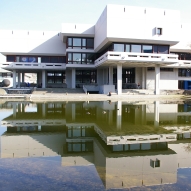Zusammenfassung
Purpose: Patients with Crohn's disease (CD) often undergo several radiological imaging studies, which - with the exception of MRI and US - subject patients to ionizing radiation. Thus, efforts have been made to identify the inflammation activity using ultrasound techniques. The aim of our study was to describe the perfusion pattern of the inflamed bowel wall in CD using contrast-enhanced ...
Zusammenfassung
Purpose: Patients with Crohn's disease (CD) often undergo several radiological imaging studies, which - with the exception of MRI and US - subject patients to ionizing radiation. Thus, efforts have been made to identify the inflammation activity using ultrasound techniques. The aim of our study was to describe the perfusion pattern of the inflamed bowel wall in CD using contrast-enhanced ultrasound (CEUS) and specific quantification software for perfusion assessment. Moreover, we compared these findings with the operative macroscopic findings as well as with the transparietal histopathological findings of surgical specimens applying an advanced histopathological scoring system. Materials and Methods: We prospectively performed CEUS in 20 consecutive patients with proven CD and planned bowel surgery due to CD within the next 15 days. We then applied the quantification software Qontrast (R) to obtain contrast-enhanced sonographic perfusion maps. The surgeon defined the clinical behavior of CD according to the Vienna classification. The resected segments were then assessed by a pathologist using an advanced scoring system. We compared the results of CEUS, macroscopic findings and histopathological scoring. Results: We found a strong negative correlation (r = - 0.677, p < 0.01) between the histopathological score and the time-to-peak (UP). Moreover, we detected a strong correlation between UP and single parameters of the histopathological scoring system. Conclusion: Ultrasound as a widely available radiation-free imaging method would be preferable for assessing inflammatory activity of CD, particularly since the ultrasound findings correlate significantly with a histopathological scoring system.






 Altmetric
Altmetric